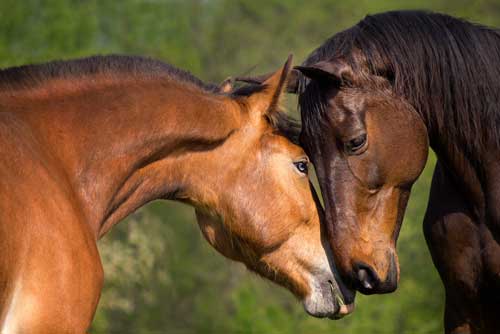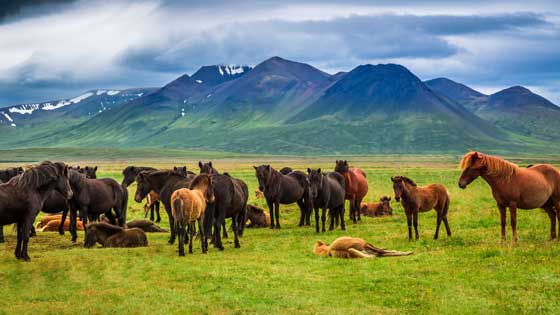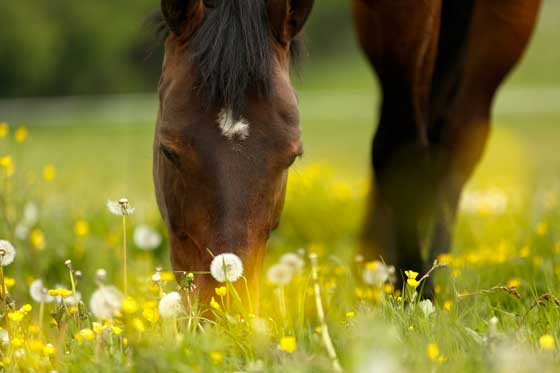THE HORSE
The horse is a prey and flight animal with a digestive system designed to support an ability to flee at a moment’s notice. Eating little and often so as never too hungry, never too full- always ready to run-has ensured the survival of the species for over three and a half million years…
Natural behaviour is deeply ingrained, and movement is an intrinsic part of the grazing patterns of a flight animal whose entire physiological system has been designed to eat from a low head position, as they would search and forage for up to 18 hours/day in the wild. While the domesticated horse has undoubtedly learned to adapt to feeding systems as devised by ourselves, their entire being is designed to be supported by the natural feeding patterns of the wild, and deviating from these natural patterns creates the underlying stress which is the ultimate cause of so many of the physical, medical and behavioural problems seen in our horses today.. .
The closer we can align our horses feeding system with that as devised by nature in order to minimise stress, the more beneficial to their overall health and wellbeing.



Why Little & Often
As the horse is designed to graze on an almost continuous basis, stomach acid is constantly being produced in order to digest the expected supply of food. The alkaline mixture of saliva and forage has a buffering effect on the acid, balancing the stomach PH and neutralising the burning effects of gastric acid. Unlike a predator that can salivate at the mere thought of food, the horse can only salivate when chewing. When left for extended periods without food, our horses cannot produce the saliva needed to buffer the acid which builds and begins to burn in an empty stomach, causing discomfort and often pain.
Why A Low Head Position
As a grazing animal the horse has been designed to eat with its head in a low position to enable a natural jaw action which correctly aligns the teeth to ensure forage is properly chewed and ground in order to promote a healthy digestive system; and balances the jaw, which in turn balances the body as a whole, allowing for correct structural alignment and ensuring tension free muscles of the neck and back, and joints of the hind legs. Eating from an unnatural high head position impairs natural jaw action and places unnatural stress on muscles and joints.
Why Movement
Active digestion begins with movement. The horse gets hungry, stomach acid builds and the need to eat causes movement due to a natural instinctive search for forage. Often it is the restriction, due to confinement, of this deeply ingrained instinct to move when hungry, that can be an underlying cause of the development of certain negative stereotypic behaviours such as Weaving and Box walking. The natural pattern of movement whilst grazing is what causes some horses to drag their hay through their bedding when fed loose on the ground.
For detailed information on how Haylo works, Visit this page

